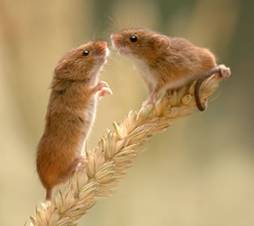
Coral Snake
Ancestory and Evolution
Body Structure
Eastern
Feeding
Reproduction
Western
What the Coral snakes Eat
Reptiles – reptiles form the largest part of the diet of a huge number of snakes and at least half of the species depend heavily or entirely on them.
Lizards- small lizards such as geckos, skinks, and small iguanas can be very abundant in favorable habitats. For this reason, they provide an enormous reservoir for snakes. Furthermore, lizards are mostly defenseless and are easy prey to snakes, which can catch, overpower and swallow them with little risk of injury.
Snakes- The fact that snakes eat snakes is highly surprising. After all, snakes are the ideal shape to fit inside other snakes. In fact, most species of snakes who eat other lizards will also eat other snakes. While snakes eating snakes may also be called cannibalism, this is not uncommon.
 Birds- Birds present snakes with two obvious problems: how to catch them and hot to obtain a good grip through the thick layer of feathers. For this reason, the snakes develop special techniques to deal with them. Their method of hunting is to hang, head down, from a bough and wait for a bird to pass below. Their strike is fast and accurate, using their ability to sense body heat through their facial pits, as well as through their senses of sight and smell. They may also eat birds who are helpless, like those who are nestlings.
Birds- Birds present snakes with two obvious problems: how to catch them and hot to obtain a good grip through the thick layer of feathers. For this reason, the snakes develop special techniques to deal with them. Their method of hunting is to hang, head down, from a bough and wait for a bird to pass below. Their strike is fast and accurate, using their ability to sense body heat through their facial pits, as well as through their senses of sight and smell. They may also eat birds who are helpless, like those who are nestlings.
Mice- Mammals of various types are eaten mainly by medium to large snakes. Rodents are the main prey of snakes in the northern hemisphere, and are eaten by the Eastern and Western Coral snake.
Snakes do not necessarily eat the same type of prey throughout their lives. Shifts in prey preference are related to size, the ability of young snakes to overpower and swallow their prey, and the availability of different sorts of prey. Young snakes are smaller than the adults of the same species, which places an obvious constraint on the type of food that they are able to handle. A common switch is from lizards to mammals. Many times, the snake is too small at hatching to tackle an adult rodent, so most east lizards which are easier to swallow. Switching does not take place suddenly, but gradually.
The amount of food eaten by snakes has received little attention. Most of times, a snake will go on with an empty stomach. Snakes take several days to digest the food, and an empty stomach indicates that the snake has not fed for a long period of time. The quantity of prey eaten will depend on many factors. Temperature is important, as the snake will not hunt if it is too cold or hot. Te type of prey is also important, for snakes that eat small items will need to feed more often. This is the case with the coral snake. Availability is also another factor. Snakes do not feed as often as they would like most often. Furthermore, female snakes may not feed when they are in advanced stages of their pregnancy, most likely due to the fact that the eggs take up most of the space in their body, leaving insufficient space for food. Snakes may also fast when they are about to shed their skin.